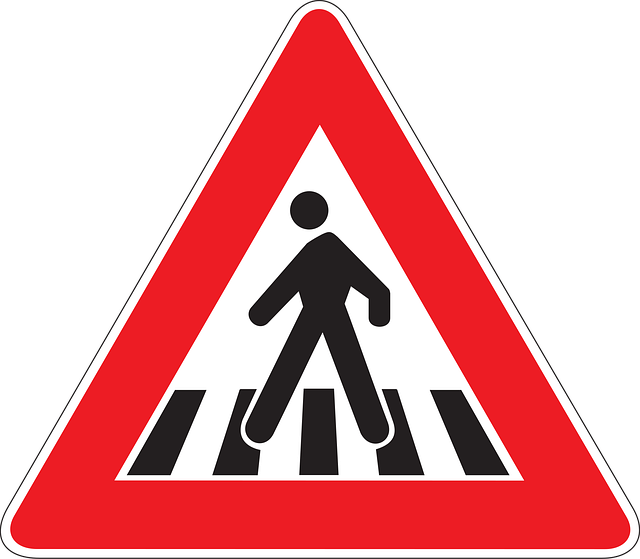Seatbelts are life-saving tools that reduce fatal injuries by up to 60%. Following Select Road Safety Tips, including proper seatbelt use and maintaining safe driving habits, significantly enhances survival rates, especially for drivers and elderly occupants. Global initiatives and organizations like WHO promote these tips, emphasizing seatbelt use during long journeys. Parents should follow guidance for child car seats.
In today’s world, wearing a seatbelt is more than just a legal requirement—it’s a life-saving habit. Understanding the basic mechanism of seatbelts and their impact on road safety is crucial. This article delves into the importance of seatbelts, backed by compelling statistics, and offers comprehensive Select Road Safety Tips for drivers. Beyond legal obligations, we explore why seatbelts are essential and provide best practices for optimal protection. Global initiatives are also highlighted to promote awareness.
- Understanding Seatbelts: Basic Life-Saving Mechanism
- Statistics Speak: The Impact of Seatbelt Usage
- Road Safety Tips: A Comprehensive Guide for Drivers
- Why Wear a Seatbelt: Beyond Legal Obligations
- Seatbelt Best Practices: Ensuring Optimal Protection
- Global Initiatives: Promoting Seatbelt Awareness
Understanding Seatbelts: Basic Life-Saving Mechanism

Seatbelts, a seemingly simple invention, are a fundamental component of road safety, designed to secure individuals in their vehicles during accidents. This basic life-saving mechanism operates by applying force and restraint to prevent sudden movements and reduce the risk of fatal injuries. When properly fastened, seatbelts distribute the impact forces across a larger area of the body, protecting the head, neck, and internal organs from severe trauma.
Understanding how seatbelts work is crucial when considering road safety tips. They act as a barrier between the occupant and the vehicle’s interior during a collision, minimizing the distance traveled by the driver or passengers. By adhering to seatbelt use, drivers and elderly individuals can significantly enhance their chances of survival in case of an accident. Moreover, regular maintenance and proper fitting techniques ensure optimal protection, addressing even concerns like signs of fatigued drivers and remedies, as well as highlighting the benefits of senior driver refresher courses for enhanced elderly driver safety considerations.
Statistics Speak: The Impact of Seatbelt Usage

Seatbelts, a simple yet life-saving accessory, have been a cornerstone of road safety for decades. The statistics on their effectiveness are compelling. According to the National Highway Traffic Safety Administration (NHTSA), wearing a seatbelt reduces the risk of fatal injuries by 45% for passengers in cars and 60% for those in trucks. These numbers speak volumes about the impact of such a seemingly minor action.
When it comes to selecting road safety tips, prioritizing seatbelt usage is non-negotiable. It’s not just about following the law; it’s about ensuring your own well-being and that of your fellow travelers. Consider using apps for real-time traffic updates to stay informed while driving, but remember, these tools cannot replace active vigilance. Also, being aware of signs of fatigued drivers and their remedies can help prevent accidents caused by driver drowsiness. Lastly, when navigating narrow, winding roads safely, maintaining a cautious pace and adhering to speed limits are crucial maneuvers.
Road Safety Tips: A Comprehensive Guide for Drivers

Maintaining road safety is a collective responsibility, especially for drivers who have a crucial role in protecting themselves and others on the road. For a comprehensive guide, let’s explore some essential road safety tips that every driver should know and practice. First and foremost, always wear your seatbelt—it’s one of the simplest yet most effective ways to save lives. When planning safe road trips with family, ensure everyone buckles up; it sets a positive example and significantly reduces the risk of severe injuries or fatalities in case of an accident.
Additionally, staying alert and focused while driving is paramount. Avoid distractions like mobile phones or eating during travel. Instead, focus on the road ahead, maintain a safe following distance from the vehicle in front, and adapt your speed to current conditions. For pedestrian safety guidelines day and night, remember to respect crossing zones, use designated paths, and be extra cautious during low-light conditions. Teach children about road safety early; help them understand traffic signals, the importance of looking both ways before crossing, and how to stay visible while walking or biking.
Why Wear a Seatbelt: Beyond Legal Obligations

Wearing a seatbelt isn’t just about avoiding fines or meeting legal requirements; it’s a powerful life-saving tool that should be embraced for its inherent benefits. Beyond legal obligations, seatbelts play a pivotal role in ensuring road safety. They are designed to restrain and protect occupants during sudden stops or collisions, significantly reducing the risk of fatal injuries. By buckling up, drivers and passengers can better manage their movements within a vehicle, minimizing the potential for severe head, neck, and chest trauma.
Integrating seatbelt use into your routine is a proactive step towards safer driving habits. This simple act enhances your chances of survival in case of an accident. Additionally, learning defensive driving techniques online can further empower you to navigate roads with enhanced awareness and safety measures. Remember that road safety isn’t solely about adhering to laws; it involves adopting behaviors that protect yourself and others on the road, including always wearing a seatbelt, being mindful of pedestrian safety around schools zones, and ensuring your vehicle is well-maintained. Also, consider packing roadside assistance essentials for unexpected situations.
Seatbelt Best Practices: Ensuring Optimal Protection

Proper seatbelt usage is a fundamental road safety tip that can significantly reduce the risk of severe injuries and fatalities during accidents. When buckled up, seatbelts provide essential protection by securing individuals in place, preventing them from being thrown out of the vehicle or striking the interior upon sudden stops or collisions. It’s crucial to remember that every passenger, regardless of age or seating position, should fasten their seatbelt securely.
For optimal protection, it’s recommended to adjust seatbelts correctly. The belt should fit snugly across the shoulder and hip, forming a ‘V’ shape at the point of contact with the chest. Avoid letting the belt rest on the shoulder or across the stomach, as this may cause more harm in certain types of crashes. Additionally, ensure that the lap portion is positioned low across the hips, not resting on the abdomen. Following these simple road safety tips can go a long way in preventing common traffic accidents, especially in scenarios like highway rest area safety for solo drivers or navigating construction zones safely.
Global Initiatives: Promoting Seatbelt Awareness

Around the globe, numerous initiatives are dedicated to raising awareness about the life-saving benefits of wearing seatbelts. These campaigns often include public service announcements, educational programs in schools, and community events aimed at teaching people of all ages the importance of buckling up. Many countries have implemented strict laws mandating seatbelt use, which has led to significant reductions in fatal and severe injury accidents.
Global organizations like the World Health Organization (WHO) actively promote road safety tips, emphasizing that wearing a seatbelt is one of the most effective ways to reduce risks on the highway. They encourage drivers and passengers alike to make it a habit, especially during long journeys or when changing tires. Additionally, pedestrian safety guidelines are also emphasized day and night, ensuring everyone understands their responsibilities to prevent accidents. For parents, child car seat installation tips are readily available, helping them ensure their children’s security while on the road.
Wearing seatbelts is more than just a legal requirement; it’s a crucial step towards ensuring road safety. As discussed in this article, understanding the basic mechanism of seatbelts and their life-saving capabilities is essential. By adhering to global initiatives promoting seatbelt awareness and following the comprehensive guide on road safety tips, we can significantly reduce the impact of accidents. Remember, wearing a seatbelt is not just about complying with the law; it’s about protecting yourself, your loved ones, and other drivers on the road. So, let’s all make it a habit to buckle up every time we sit behind the wheel.
